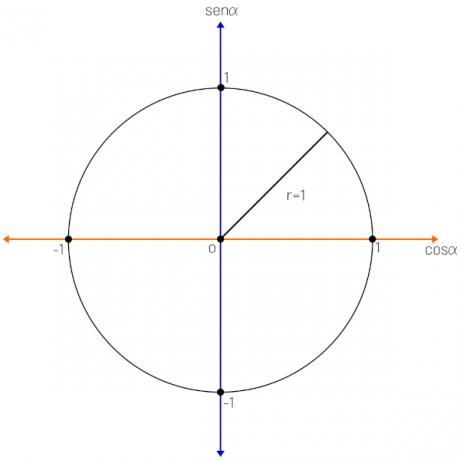Length measurements are effective measuring mechanisms as they use conventional measurements such as millimeter, centimeter, meter, kilometer as a resource.
They were created precisely to mitigate the probability of errors occurring when it was necessary to measure things.
Here you will learn about these measurement units and learn how to calculate each one of them.
| multiples | subway | submultiples | ||||
|---|---|---|---|---|---|---|
| km | hm | dam | m | dm | cm | mm |
| 1,000 m | 100 m | 10 m | 1 m | 0.1 m | 0.01 m | 0.001 m |
Subway
The base measure in the International System of Measurements (SI) is the meter. The meter has multiples, which correspond to large distances and sub-multiples, which in turn correspond to small distances.
- So are multiplesofsubway: kilometer (km), hectometer (hm) and decameter (dam).
- while they are submultiplesofsubway: decimeter (dm), centimeter (cm) and millimeter (mm).
As we have seen, the multiples of the meter are the great distances. They are called multiples because they result from a multiplication that is referenced to the meter.
Sub-multiples, on the contrary, as small distances, result from a division that also has the meter as its reference. They appear on the right-hand side in the table above, whose center is our base measure - the meter.
Also read about
- Mass Measures
- Volume Measurements
Unit Conversion Exercises
The following exercises are easily solved using the Measure Translator table.
Exercise 1
How many decimeters equal 3.50 kilometers?
First, put in the length you have. The digit that is followed by a comma must be below its unit. So, as we have 3.50 km, the 3 should be in the km column.
| multiples | base measure | submultiples | ||||
|---|---|---|---|---|---|---|
| kilometer (km) | hectometer (hm) | dekameter (dam) | meter (m) | decimeter (dm) | centimeter (cm) | millimeter (mm) |
| 3, | 5 | 0 |
Then, we must fill the columns with 0 until we reach the unit we want. Finally, the comma moves from the starting place and goes to the end (the comma at the end, however, should not appear).
| multiples | base measure | submultiples | ||||
|---|---|---|---|---|---|---|
| kilometer (km) | hectometer (hm) | dekameter (dam) | meter (m) | decimeter (dm) | centimeter (cm) | millimeter (mm) |
| 3 | 5 | 0 | 0 | 0, |
Thus, we have the following result:
3.50 km = 35000 dm
The same scheme should be used in the following exercises:
Exercise 2
105 hectometers equals how many meters?
| multiples | base measure | submultiples | ||||
|---|---|---|---|---|---|---|
| kilometer (km) | hectometer (hm) | dekameter (dam) | meter (m) | decimeter (dm) | centimeter (cm) | millimeter (mm) |
| 105 | 0 | 0 |
105 hm = 10500 m
Exercise 3
Convert 0.75 centimeters to hectometers.
| multiples | base measure | submultiples | ||||
|---|---|---|---|---|---|---|
| kilometer (km) | hectometer (hm) | dekameter (dam) | meter (m) | decimeter (dm) | centimeter (cm) | millimeter (mm) |
| 0 | 0 | 0 | 0 | 0,75 |
0.75 cm = 0.000075 hm
Exercise 4
How many decameters are 37 kilometers plus 45 decameters?
| multiples | base measure | submultiples | ||||
|---|---|---|---|---|---|---|
| kilometer (km) | hectometer (hm) | dekameter (dam) | meter (m) | decimeter (dm) | centimeter (cm) | millimeter (mm) |
| 37 | 0 | 0 |
37 km = 3700 dam
3700 dam + 45 dam = 3745 dam
3745 dam
Exercise 5
The oriental art exhibition is 33568 meters long, while the African art exhibition is 29 kilometers and 5594 meters over. What is the shortest exposure?
| multiples | base measure | submultiples | ||||
|---|---|---|---|---|---|---|
| kilometer (km) | hectometer (hm) | dekameter (dam) | meter (m) | decimeter (dm) | centimeter (cm) | millimeter (mm) |
| 29 | 0 | 0 | 0 |
29 km = 29000 m
29000 m + 5594 m = 34594 m
The oriental art exhibition is the shortest.
History
In antiquity, when there was still no convention, people looked for ways to measure. To do so, they used parts of the body, a resource that was imprecise and, therefore, resulted in an error.
When using feet in mediation, for example, the probability of errors occurring was very high as the sizes of these limbs differed from person to person.
Thus, in the 60s, the International Measurement System(SI), which originated in France.
Meet others Units of Measure and learn about Unit Conversion.



